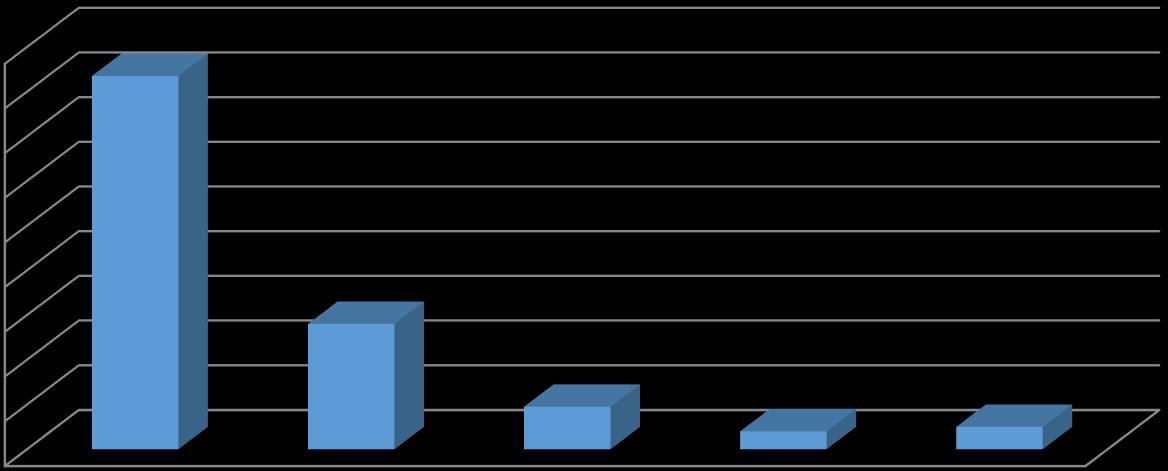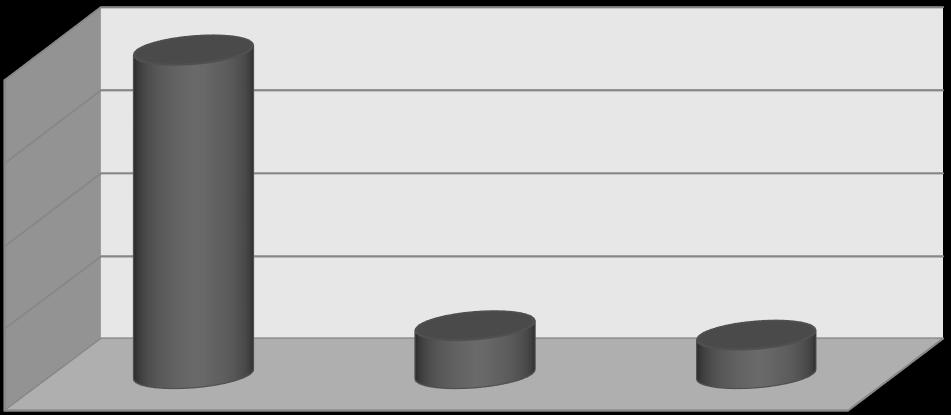http://www.inosr.net/inosr-applied-sciences/ Kaliza
INOSR APPLIED SCIENCES 10(1):1-13, 2023.
©INOSR PUBLICATIONS
International Network Organization for Scientific Research
ISSN: 2705-165X
Evaluation of Reasons for Excessive Alcohol use and the effects on Students of Kampala International University Western Campus
Kaliza EstherDepartment of Clinical Medicine Kampala International University Western Campus Uganda.
ABSTRACT
People say they drink alcohol either to have fun, celebrate an achievement, or “down their sorrows” after a major life stress. High alcohol consumption in Uganda is linked to the aggressivemarketingbymanufacturers throughmass mediaadvertisements,sponsorshipof sports activities, performing arts and music, free alcohol promotions at discount prices and total disregard of the law on availability of alcohol, time and selling points. Uganda still has neithernationalalcohol policy nor an effective regulatory body. Attempts by the ministry of health to regulate the consumption of alcohol have been opposed by the ministry of trade which has blocked a propose ban on the manufacture and consumption of alcohol. Adolescents and the youth are highly engaged in this practice, as they are the ones who frequentnightclubs,barsandeventhrowhouseparties.Alcoholisaffordable,andavailable. This study focuses on the reasons for consumption of alcohol among students of KIU-WC. It also examines the effects these students have had with taking alcohol, as well as their awareness of the effects of alcohol. The campus, located in Western Uganda (Ishaka, Bushenyi) has a standing population of about three thousand two hundred and seventy one students. A sample size of three hundred and forty six students was estimated using a Morgan’s table, but because the study was carried out while most students were on a semester break, a sample size of two hundred sixty students was used in this study. A questionnaire was used for data collection. Data has been presented in form of charts and tables. It showed that 52% of the respondents consume alcohol, and those who motioned they don’t basically attributed it to their religious affiliation. Most of the respondents (45%) were between ages; 23-27 years. The study also shows that for those who consume alcohol, many don’t solely consume one brand of alcohol. The major reason given for consumption of alcohol was because “everyone does it.” This could be people taking alcohol so as the fit in the crowd. The next reason given was to relieve stress. Most of the respondents answered to having been absent from school because of alcohol. This could have been because they were nursing a hangover, catching up on sleep because they were out till late at night, or because they were busy drinking in their rooms or organizing a drink-party. The greatest percentage (78.46%) of respondents was found to be aware of the effects(s) alcohol has on health, while the remaining11.92% was unaware. 9.62% gave no response. Among the health effects known to the respondents, liver disease; a long term effect of alcohol consumption was listed by majority of the respondents (149). The least mentioned effect was acute intoxication;a short termeffectofalcohol consumption. In conclusion, this study demonstrates that majority of students in KIU-WC campus do consume alcohol for a number of reasons. Most of them are also well aware of the effects of alcohol, but still chose to drink. There is, therefore need to keep up with education of the public about excessive alcohol use. There is still need for the country to implement an alcohol law, governing the sale and consumption of alcoholic beverages.
Keywords: Alcohol, Manufacturer, Consumption, Students, Health.
INTRODUCTION
Globally drinking alcoholic beverages is a common feature of social gatherings. Nevertheless, the consumption of alcohol carries a risk of adverse health and social
consequences related to its intoxicating, toxic and dependence-producing properties [1,2,3,4,5,6,7]. Alcohol is the most commonly used psychoactive
http://www.inosr.net/inosr-applied-sciences/ Kaliza
INOSR APPLIED SCIENCES 10(1):1-13, 2023.
substance in the world and is one of the leading causes of death and disability worldwide [2,8,9,10,11,12]. Globally, alcohol use causes 1.8 million or 3.2% of all deaths and accounts for 4.0% of the disease burden. The disease burden related to alcohol use is especially great among low income and middle-income populations and countries, where alcohol consumptionisincreasingandinjuryrates are high due to limited implementation of public health policies and prevention strategies [3] A critical aspect of alcohol use is pre-teen alcohol initiation, which worsens adverse health outcomes among youth. Epidemiological studies in western countries have examined the association between early alcohol initiation and problems related to alcohol among youth, but data is lacking to study such associationsin mostdevelopingcountries. Literature on pre-teen alcohol initiation have identified gender, age, monthly income, living arrangement, attitude toward alcohol use, perceived susceptibility of alcohol use, perceived self-efficacy, peer drinking, relatives drinking, accessibility of alcohol around university, accessibility of alcohol around community, exposure to anti-alcohol campaign, [4] exposure to alcohol advertising, and ownership of alcohol promotionalitemsassignificantcorrelates of alcohol use. The risk of alcohol use among youth in low-income countries is a vital public health concern. In Africa, alcohol use is related to poverty, road traffic crashes, sexual intercourse among
adolescents, unprotected sex, [5] and psychological distress [6]. To exacerbate the conditions, heavy episodic drinking is prevalent among young adults in several African countries [1]. For example, more than one in every three Zambian adolescents have ever drunk alcohol, [7,8,9,10] and Uganda has been noted shaving the highest alcohol per capital consumption in the world [1]. Ugandans consume more alcohol than counterparts in any African countries, demonstrating the citizens’ “abiding love for liquor”. According to a study done by US broadcaster, Cable News Network (CNN);titled “World’s 10 best drinking nations,” Uganda is ranked 8th globally (with home-made waragi (a.k.a war gin) and ajono (semi-fermented beer drunk from communal pots using long straws, topping the alcohol menu) ahead of Germany and Australia at positions 9 and 10, respectively (www.cnn.com, March 2013). Alcohol ranks high (6th position) in generating domestic revenue in Uganda. About 10% of revenue comes from alcohol andthis has been reportedly to be steadily increasing since it is rooted in a very strong culture of alcohol acceptance. The lack of a clear national alcohol policy coupled with weak and poorly enforced laws provides fertile groundforincreasing the availability andaccessibility ofalcohol in Uganda. In Uganda, most alcohol consumers have been found to be middleaged, leading to the conclusion that age as a factor may be a determinant in alcohol consumption patterns
Statement of Problem
The WHO estimates that around 2 billion people worldwide consume alcohol [1] and there is clearly no single reason why they do or why different people drink to different extents. It is apparent though that drinking is influenced by factors such as genetics, social environment, culture, age, gender, accessibility, exposure and personality. Alcohol consumption has been part of human history since antiquity. There are not only numerous Biblicalexamplesandancientmythswhich refer to alcohol but local oral history and archeological findings suggest that consumption has been part of African
culture, rituals since “time memorial”. But the fact of enduring alcohol consumption andthepassingdownofthishabitthrough generations does not adequately explain why alcohol is consumed [8].
Alcohol abuse is a significant problem among young people and a solution needs to be found. It is the drug of choiceamong the youth, often with devastating consequences. Most people do consume alcohol, and barely know the effects it could have on them; be it short or long term effects. Alcohol plays a powerful role in risky sexual behavior, including unwanted, unintended and unprotected
http://www.inosr.net/inosr-applied-sciences/ Kaliza
INOSR APPLIED SCIENCES 10(1):1-13, 2023.
sexual activity, and sex with multiple partners. Alcohol is associated with academic failure and drug use. Young people drink too much and at too early an age, thereby creating problems for themselves, for people around them, and for society as a whole. A study conducted by [9] on the prevalence of alcohol consumption among university students showed that 78% of the students were usingalcohol.About79%ofthemalesused alcohol as compared to 75% among
females.Thestudyfurthershowedthatthe majority (92%) of the students began drinking alcohol before joining university. By inference these findings are evidence that there is a general increase in the prevalence of alcohol and drug abuse among the youth, hence the need for this study to focus on educational institutions and the stakeholders to implement an alcohol law governing the sale and consumption of alcoholic beverages as a point of reference.
Justification of the Study
Alcohol is a product that is highly advertised,andthemediaportraysalcohol consumption as something normal and acceptable. Each individual has reason(s) as to why he/she consumes alcohol and the amount consumed. Some know the
The study seeks to find the reasons for excessive alcohol
Aim
effects of excessive alcohol consumption, and others don’t. This study seeks to document the possible reasons as to why students of KIU-WC consume alcohol in excess and the possible effects they have encountered.
consumption and its effects among students of KIU-WC.
Specific objectives
i. To find the proportion of students of KIU-WC who consume alcohol.
ii. Toestablishthepossiblereasonsas to why students of KIU-WC
consume alcohol in excessive amount.
iii. To find whether the students of KIU-WC understand the effects of excessive alcohol consumption.
Research Questions
What is the proportion of students of KIU-WC that consume alcohol?
What are the possible reasons for excessive alcohol consumption among KIU-WC students?
What is the level of awareness about the effects of excessive alcohol consumption among students of KIUWC?
METHODOLOGY Study Design
A cross-sectional study was used to determine the reasons for excessive alcohol use and the effects among students of KIU-WC.
Area of Study
Kampala International University's Western Campus [KIU-WC] is situated on about 70 acres of land at Ishaka town in Bushenyi District, along Mbarara –Kasese Road in Western Uganda. This spacious campus was opened in November 2004. TheSchoolAlliedofHealthSciences[SAHS] islocatedattheKIU-WC.Itoffersanumber of courses in bachelors, diplomas and certificates. Bushenyi District is one of the oldestdistrictsinUganda.Itwascreatedin 1974, curved out of Mbarara District Administration then in 2009, it was split into five districts (4 new districts of
Buhweju, Mitooma, Sheema and Rubirizi districts) with one new municipal Council of Bushenyi- Ishaka. Bushenyi District lies between 0 0 N and 0 0 46’ S of the equator and 29 0 41’ East and 30 0 30’ East of Greenwich.BushenyiDistrictheadquarters is located 340 kilometres from Kampala in the South Western part of Uganda, neighbored withthe districtsofRubiriziin theNorth, Buhweju and Sheema in the NorthEast, Sheema in the East,Mitooma in the South West and Sheema in the South. The district has a land area of 3’949 square kilometers and lying between 910 – 2,500
http://www.inosr.net/inosr-applied-sciences/ Kaliza
INOSR APPLIED SCIENCES 10(1):1-13, 2023.
meters above sea level. The main physical features within the district include natural tropical forests of Karinzu and Imaramagambo covering an area of 784 kilometres. Bushenyi District has a
population of 241,500 people made up of 117,000 males and 124,000 according to the projected population estimates of 2010.
Population of Study
The study was conducted by the researcher at Kampala International University Western Campus which had a population of 10,271 students. The
proportion of students of KIU-WC who consumed alcohol and the reason for excessive alcohol intake were also under study.
Inclusion Criteria
CurrentstudentsofKIU-WCwerethetarget for this study.
Exclusion Criteria
Students who were not willing to consent.
Study Variables
Dependent Variable
Reasons of excessive alcohol use and its effects amongst students of KIU-WC.
Independent Variables
Proportion of KIU-WC students who consume alcohol excessively. Possible reasons for excessive alcohol consumption amongst KIU-WC students.
Level of awareness about the effects of excessive alcohol consumption amongst students of KIU-WC.
Sample Size Determination
Morgan’s table was to determine the sample size for this study with a confidence interval of 95%, and a margin
of error; 5.0%, the sample size for this study was three hundred forty six (346) students.
Data Collection
Data was collected using a structured questionnaire which was administered by the researcher and the population under studyansweredquestionsbytickinginthe
corresponding space using a pencil or a pen and respondents given time frame of not more than two days to answer the questions.
Sampling Methods
Simple random sampling was used for this study.
Analysis of Data
Data collected was analyzed in form of tables and pie chart and bar graphs in respective of each Objective, percentage
were also used and descriptive words were used to explain the data that was represented.
Quality Control
To ensure quality control, I conducted a one day training for the one research assistant who there-after did field testing
of the study tools. A total of four questionnaires were distributed for the pre-test with my close supervision
http://www.inosr.net/inosr-applied-sciences/ Kaliza
INOSR APPLIED SCIENCES 10(1):1-13, 2023.
RESULTS
Age groups of respondents
The majority (45%) of students who participated in the study were between 23-27 years, followed by those between 18-22 years; (34%). The rest of the respondents were below eighteen years, and others above twenty seven years.
Age of Respondents
Gender
More males (67%) than females (33%) participated in the study.
Gender of respondents
Figure
Gender of respondent. Religion
Majority (83%) of the respondents were Christians. This encompassed Anglicans, Catholics seventh day Adventists,
Pentecostals etc. The remaining 17% were of Muslim faith.

Nationality
Onehundredsixtysevenrespondents; 64% were Ugandans, fifty six Nigerian, nineteen Kenyan and Tanzanians were eight. The others were Rwandese, Sudanese, Cameroonians, etc who were ten (10).


http://www.inosr.net/inosr-applied-sciences/ Kaliza


INOSR APPLIED SCIENCES 10(1):1-13, 2023.
Response to taking Alcohol
The majority of respondents 136; (52%) consumed alcohol, and the rest; 124 (48%) did not.
5: Percentage of respondents who take alcohol Reason(s) for not taking alcohol
For those who responded to not consuming alcohol, most respondents; thirty seven (37) said it was because of their religious faith; being born again, this
was followed by those who don’t consume it out of health reasons (34). The least of these respondents; ten (10) did not respond.
6: Reasons for not taking alcohol.
Type of alcohol consumed
Of the one hundred thirty six respondents who said they consumed alcohol, the majority;thirtyoneconsumedbeeronlyas their alcohol preference, followed by
twenty two who chose wine.The rest preferred more than just one alcoholic drink; for example twenty two preferred taking beer, spirits and gins as well as

http://www.inosr.net/inosr-applied-sciences/ Kaliza
INOSR APPLIED SCIENCES 10(1):1-13, 2023.
wines. Sixteen respondents did not choose any alcohol type.
Reason(s) for consuming alcohol
Fifty (50) respondents said they consumed alcohol because “everyone” does it. Forty eight said they did it to relieve stress,
thirty said they found it cheap and readily available, whereas eight said they just felt like doing it.
I just feel like doing it
To relieve stress
Everyone does it
Figure 7: Reasons for consuming alcohol.
Drinking patterns
Most of the respondents (37%) answered to consuming alcohol on a weekly basis. The least (29%) took alcohol on a monthly basis.

http://www.inosr.net/inosr-applied-sciences/ Kaliza



INOSR APPLIED SCIENCES 10(1):1-13, 2023.
Frequency of ConsumingAlcohol

Effect(s) of alcohol on respondents
Eightyseven(87)respondentsansweredto having ever been absent from school because they consumed alcohol, thirty seven (37) responded to having ever been drunk while at school, thirty one (31)
experience poor performance at school, and other had ever experienced an accident from drinking alcohol. The rest had ever been arrested, driven under the influence and had had family problems
Awareness of the effects alcohol has on health. The greatest percentage of respondents; 78.46% were aware of the effects alcohol has on health. 11.92% were unaware, and 9.62% didn’t respond.
Effects of Alcohol
Majority of the respondents; one hundred forty nine (149) listed liver disease (a long term effect) as the commonest effect of alcohol consumption. This was followed by psychological/mental problems, the
least mentioned effect was acute intoxication (a short term effect). The majority of respondents 136; (52%) consumed alcohol, and the rest; 124 (48%) did not

DISCUSSION
The study was set to assess the reason(s) for alcohol consumption and its effects among students of KIU-WC. The majority of respondents (45.38%) were between the ages; twenty three to twenty seven years. Others were between eighteen to twenty two years (33.46%), above twenty seven years (13.85%). The least number of respondents was those below eighteen years (7.30%). More than half (66.54%) of the respondents were male. There were more respondents of Christian faith (83.46%) than Islam (16.54%). The respondents were of different nationality,
with Ugandans being the majority (64.54%), followed by Nigerians (21.54%). The least number of respondents were Tanzanian (8). Other nationalities were Kenyans, Rwandese, Burundian, and Cameroonian.Morethanhalf;onehundred thirty six (52.30%); the sample size of the population admitted to consuming alcohol. The remaining one hundred twenty four (47.69%) said they did not consume alcohol. Of these, thirty seven attributed their not taking alcohol to their Christian faith; that is being born again. Other reasons given for not taking alcohol
http://www.inosr.net/inosr-applied-sciences/ Kaliza
INOSR APPLIED SCIENCES 10(1):1-13, 2023.
were;health (34),naturallydon’tlikeit (24) and Islamic faith (19). Ten respondents didn’t give any reason. The world’s religions have differing relationships with alcohol. Many religions forbid alcoholic consumption or see it sinful or negative. Today, some Christians believe one ought to abstain from alcohol. Islam considers consumption of khamar (fermented drinks, wine) sinful under the Islamic dietarylaws.Withawiderangeofalcoholic beverages on the market today, it is quite rare to find individuals who solely consume one type of alcoholic beverage. This study, however, identified 31, 6, 22 and 3 individuals who consumed beer, spirits & gins, wines and Sherries solely respectively. The rest of the participants were found to consume a variety; for example twenty two consumed beer, spirits & gins as well as wine as reflected in table 2. Other alcoholic drinks of consumptionwerebasicallylocalbrewlike malwaandkwete. Alcohol has been a part of communal life for millennia, and has an important place in social, spiritual, and emotional experience. There are a multitude of reasons as to why people drink. In this study, most of the respondents (50) said they drink because everyone does it. This could be linked to the fact that they drink in order to “fit in”. Forty eight (48) said they did it in order to relieve stress. In a study carried out in UK, in 2011, alcohol was named the top stress reliever; 61% of adults said drinking was their top choice after a stressful day. DonnaDawson,a psychologistsaid, “when it comes to drinking alcohol, the way the humanbrainworksmeanswearenaturally disposed to find a reason to indulge, particularly if we’ve had a tough day. An exampleofthisishavingadrinkafterwork as a way to unwind from stress- in this scenario, the brain has decided that stress is ‘bad’ for us, and that alcohol, because is apparently relieves stress ‘is good’. So, at the end of the day, we may know that the second or third glass of alcohol is not really needed or desired, but the brain has already rationalized that if one glass felt
good, then more will feel even better.” Thirty (30) respondents said they drink because alcohol is cheap and available, and eight (8) said they just felt like it. Drinking patterns reflecthowpeopledrink instead of how much they drink. This study revealed 36.67% of the respondents who consume alcohol did it on a weekly basis, 33.83% on a daily basis, and 29.41% on a monthly basis. Respondents turned out to have experienced more than one effect according to the questionnaire. The majority; eighty seven turned out to having been absent from school, either because they were in bars, or even their rooms consuming alcohol, or they were recovering from the after effects (hangover) of alcohol consumption. Thirty seven (37) said they had ever been drunk while at school, thirty one (31) said they had ever had poor performance at school. This encompassed performance in academics, concentration in class, etc. Other effects included sustaining an injury, driving under the influence, having been arrested, as well as family problems. For most people, drinking responsibly can be part of a balanced and healthy lifestyle. It is no secret that alcoholcan cause major health problems. In adverts of alcoholic beverages, the closing remark is usually, “excessive alcohol consumption can be harmful to your health.” Worldwide, a vast number of individuals are aware of the health hazards of alcohol. The study showed that 78.46% of the respondents were aware of the effects alcohol has on health. 11.92% were unaware. 9.62% did not respond. According to the study, the commonest effect of alcohol on health mentionedwasliverdisease.Thisisinline with what is known worldwide; liver cirrhosisbeingthecommonestknownlong term effect of alcohol consumption. This was followed by psychological/mental problem(s),whichwas listedbyeighty(80) of the correspondents. Other effects mentioned were violence (25), loss of employment (25) brain damage (19), and acute intoxication (18).
http://www.inosr.net/inosr-applied-sciences/ Kaliza
INOSR APPLIED SCIENCES 10(1):1-13, 2023.
Challenges
During the time of the study, students of the university were on a semester break. Therefore the initial sample size (three hundred forty six) could not be reached.
Hence the sample size used for the study was two hundred sixty from those who were still present and willing to participate.
Conclusion
Although classified as a depressant, the amount of alcohol consumed determines the type of effect. Most people drink for thestimulanteffect,suchabeerorglassof wine taken to “loosen up. “Reasons as to why people consume alcohol vary among individuals.Anumberoffactors;including environment, genetics, etc. come into play and influence an individual’s drinking habits. This study demonstrated the following reasons as to why students of KIU-WCconsumealcohol;Everyonearound me does it (36.76%), to relieve stress (35.29%),itischeapandavailable(22.06%),
lastly just feel like doing it (5.88%) For those who said they didn’t take alcohol, the greatest reason was related to their religious affiliation; they were either “born again” Christians, or Muslims. A greater percentage of the respondents (78.46%) were aware of the health effects alcohol hasonhealth.Morethanhalf73.04%ofthe respondents listed liver disease as an effect of alcohol consumption. This is a long term effect. The question is; “are people out there aware that the effects of alcohol consumption can be short or long term?”
Recommendations
National level; Uganda, as a nation has no strictandenforceable lawthatgoverns the distribution and consumption of alcohol. Alcohol is affordable and can be accessed by anyone. The young are being initiated into consuming alcohol by either their parents, peers, or by the easy availability of alcoholic beverages. Adolescents are inquisitive and they would do just about anything to “taste the waters.” Just like as been done in the neighboring country; Kenya, there is, thus a need for the responsible bodies to formulate a law that governs the distribution and consumption of alcohol in the country. There is still need for education of the population regardingtheeffectsofalcohol.Thisstudy was done among students of the medical
1. WHO(2014)GlobalStatusReporton Alcohol and Health.
2. J.Rehm, C.Mathers, S.Popova, M.Thavorncharoensap et al., (2009) GlobalBurdenofDiseaseandInjury and Economic Cost Attributable to Alcohol use and Alcohol-use Disorder The Lance Volume 373.
3. Swahn, M. H., Ali, B., Palmier, J., Tumwesigye, N. M., Sikazwe, G.,
university, and despite their literacy, 11.92% of the respondents was not aware of the effects alcohol has on health. One, thus would wonder what figure would be attainedifa nationwide research was tobe conducted. There is, thus need for sensitization through health talks, media to see that people are well informed about the various effects of alcohol, be it on health or economy. Among the respondents, a high proportion (33.83%) reported to consume alcohol on a daily basis. This number is too high, thus there is a need to start a campaign on moderate consumption of alcohol, both among students and among other members of the society at large.
REFERENCES
Twa-Twa, J., & Rogers, K. (2011). Early alcohol use and problem drinking among students in Zambia and Uganda. Journal of public health in Africa, 2(2), e20. https://doi.org/10.4081/jphia.201
1.e20
4. Vantamay S (2009). Alcohol consumption among university students: applying a social
http://www.inosr.net/inosr-applied-sciences/ Kaliza
INOSR APPLIED SCIENCES 10(1):1-13, 2023.
ecological approach for multi-level preventions. SoutheastAsianJTrop Med Public Health. 2009; 40:354–69.
5. KalichmanSC,SimbayiLC,Kaufman M, et al (2007). Alcohol use and sexual risks for HIV/AIDS in subSaharan Africa: systematic review of empirical findings. Prev Sci. 2007; 8:141–51.
6. Page, R. M., & Hall, C. P. (2009). Psychosocial distress and alcohol use as factors in adolescent sexualbehavioramongsub-Saharan African adolescents. Journal of SchoolHealth, 79, 369–379.
7. Siziya,S.,Muula,A.S.&Rudatsikira, E (2011). Self-reported poor oral hygiene among in-school adolescents in Zambia. BMC Res Notes 4, 255 (2011).
8. Parry C. Making the Polluter Pay: The case for a Health Promotion Foundation in SA funded by a Levy on Alcohol. Soul City and National Council Against Smoking Health Promotion Indaba 2011, Johannesburg
9. Ogundipe, O.; Amoo, E.; Adeloye, D.; Olawole-Isaac, A. Substance use among adolescents in sub-Saharan Africa: A systematic review and meta-analysis. S. Afr. J. Child Health 2018, 2018, s79–s84.
10. Ogugua, V N., E G Anaduaka, C Chijioke, S I Egba, O P C Ugwu (2013). Effects of storage on autooxidation levels of selected alcoholic and non alcoholic beverages in Nsukka town, Enugu State of Nigeria. World Journal of Pharmaceutical Research 2 (4), 758764
11. Ugwu Okechukwu P.C. and Amasiorah V.I. (2020). Review on Health Implications, Benefits and Biochemistry of Alcohol Intoxication. INOSR Experimental Sciences 6(1): 62-74.
12. Ebugosi Richard Sonny, Achara Immaculata Ngozi and Ugwu Okechukwu P.C. (2023) Evaluation
of the effects of Maternal alcohol consumption on some selected biochemical parameters. IAA Journal of Biological Sciences 10(1):87-95.
